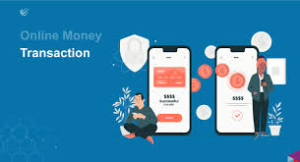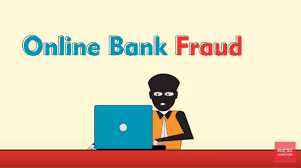A hand grips a smartphone; its screen is illuminated with a login interface for the bank, positioned beside promotional material highlighting an upgrade in online banking security. The consumer advocacy group has had to shift its focus toward the realm of online banking safety. Their most recent report delves into the resilience of banking applications, outlining essential guidelines that empower users to outsmart fraudsters. Interestingly, scammers are also targeting postage stamps now. The British consumer organization known as Which? has been a fixture since the 1950s. True to its name, for much of its initial sixty years, it primarily engaged in product evaluations—ranking items like the top ten washing machines available—and guiding consumers on their rights regarding refunds for defective products. However, in recent times, Which? Has increasingly dedicated itself to addressing fraud concerns such as online banking security and equipping consumers with strategies to combat these threats. This shift underscores the alarming scale of scams affecting everyday individuals today.

What caught my attention about their latest findings was not just this focus but also how it highlights the vast array of issues currently plaguing consumers. To begin with, let’s summarize their investigation into the online security measures employed by central UK banks. Their team of investigative journalists scrutinized four critical aspects: adherence to best security practices, login protocols, account management procedures, and logout functionalities—assigning scores based on their effectiveness.
The encouraging news is that overall performance among banks was commendable; however, several red flags emerged. For example, TSB was found negligent in managing sensitive information properly; this oversight allowed other applications on a user’s device access to potentially confidential data. Meanwhile, Co-operative Bank faced criticism for not requiring two-factor authentication when customers logged in from a new laptop for the first time—a crucial step often overlooked in safeguarding accounts. Additionally, Lloyds received backlash despite generally strong performance due to its failure to log users out after five minutes of inactivity automatically.

This investigation vividly paints a picture of progress and ongoing challenges within bank security practices. It reflects how vital it is for institutions to evolve alongside emerging threats in today’s digital landscape.
For those interested in a comprehensive overview, you can find extensive information about the performance of banks in the UK regarding online and mobile security. However, what truly captured my attention in their report wasn’t just the specific critiques of various banks but rather their broader recommendations for maintaining safety while engaging in online banking. This is a crucial area where a significant amount of fraud occurs—think of all the phishing scams, robberies, and general online criminal activity that stem from unauthorized access to victims’ bank accounts.
Imagine someone at a desk with a credit card and smartphone alongside their laptop, working to enhance their online banking security while managing finances or shopping online. In light of this context, here are six essential guidelines for ensuring your online banking safety that TMT ID has highlighted—these tips cannot be emphasized enough:
First and foremost, safeguard your mobile device. As I’ve mentioned previously, placing your phone in a timely manner can be just as detrimental as losing your password. Ensure you have a unique PIN for your SIM card and activate features that help locate your phone if it goes missing. Additionally, turn off preview notifications so sensitive information like SMS-based one-time passwords isn’t visible on a locked screen.

It’s also vital to keep your phone separate from your bank cards. It’s alarming to see individuals treating their phones as wallets with cards attached; when both items are in the hands of an opportunistic thief, it makes their job considerably more manageable.
Regularly update your device with the latest software upgrades and ensure it has robust antivirus protection installed. When it comes to passwords, opt for unique combinations rather than reusing them; make them complex enough to deter easy guessing. If you’re concerned about remembering them all, consider using an app designed for secure password storage—but ensure that access to this app is heavily protected.
Furthermore, be mindful not to let your social media presence become a vulnerability; keep personal details out of public view. For instance, avoid sharing information such as your date of birth or mother’s maiden name on social platforms—these can serve as answers for verification questions later on. Be cautious about accepting friend requests or opening messages from unknown individuals.

Finally, if you suspect that malicious actors or scams might have targeted you, take immediate action by contacting relevant authorities or support services without delay.
Recently, a significant takeaway from Which? Has been its transformation from a champion of consumer rights to a guardian against consumer fraud. However, they also highlighted another fascinating story that provided a striking contrast. This involved the alarming rise in counterfeit postage stamps. The issue came to light when unsuspecting individuals began receiving fines for mail that had not been paid for, even though it appeared to have legitimate stamps affixed. This unusual scam garnered considerable media attention, likely due to its novelty factor.
What I found particularly interesting about this situation was how it contrasted with the prevalent warnings surrounding online banking scams. After all, what could be more traditional and non-digital than a classic postage stamp? It stands in stark opposition to the modern act of accessing your bank account through your smartphone while on the go—it’s almost quaint by comparison. Yet, fraudsters remain indifferent; they are just as willing to peddle counterfeit first-class stamps as they are to engage in phishing schemes aimed at stealing personal information for bank account hacks.

To add insult to injury, many victims of these fake stamps often find themselves directed towards fraudulent websites explicitly designed to capture their private data—a double whammy for the scammers involved. These con artists will exploit any opportunity available and frequently employ tactics that may not even cross your mind. As Which? ‘s recent findings underscore, today’s savvy consumer must maintain an ongoing state of vigilance and scepticism across all fronts if they hope to evade being taken advantage of in this ever-evolving landscape of fraud.
Maxthon
Maxthon has unveiled an impressive suite of digital upgrades designed to transform the way you navigate the internet. At the heart of these enhancements is a cutting-edge rendering engine that boosts performance, allowing users to load web pages—especially those rich in multimedia—at remarkable speeds. What sets Maxthon apart is its groundbreaking cloud synchronization feature, which seamlessly links your bookmarks, browsing history, and settings across all devices, whether you’re using a desktop, tablet, or smartphone. This ensures that your online experience remains unified and fluid no matter where you are.

In addition to this, Maxthon offers a powerful ad-blocking tool that can be activated with ease. This built-in functionality effectively eliminates disruptive ads while enhancing page loading times, leading to a more enjoyable browsing experience. Another standout feature is the split-screen browsing capability; it enables users to view two web pages simultaneously—an excellent asset for research or product comparisons without the hassle of toggling between tabs.
Furthermore, Maxthon includes a handy resource sniffer tool that simplifies the process of locating downloadable media files on any webpage. With this feature integrated directly into the browser, saving videos and music becomes straightforward and does not require additional software installations. For those who appreciate customization options, Maxthon offers various themes and layouts that allow you to adjust your browser interface according to your tastes. Personalizing these aspects can significantly enhance usability and overall satisfaction during your online journeys.
Privacy-conscious users will find comfort in Maxthon’s robust privacy protection features. Tools like incognito mode and anti-tracking measures provide peace of mind for individuals looking
